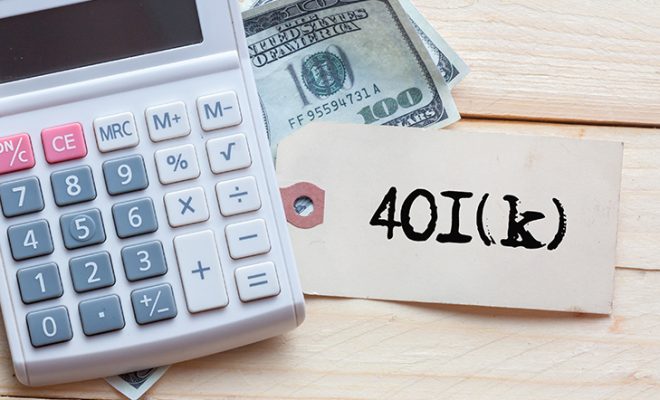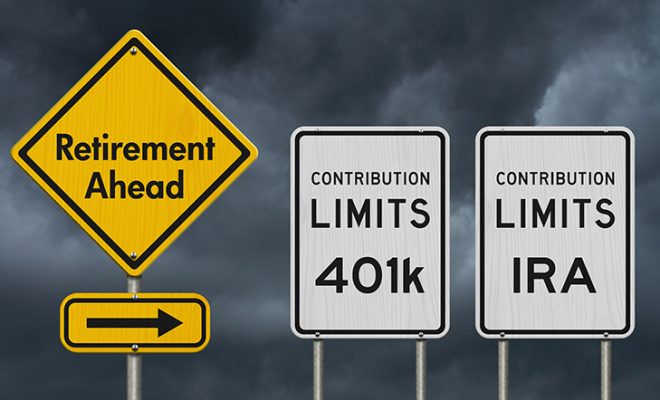The Power of Compounding and Rate of Return for Roth IRAs

A Roth IRA is a retirement savings tool that allows you to build wealth with tax-free growth and withdrawals. Since it is self-managed, you have full control over your investments, and because it is not employer-sponsored, you can take it with you no matter where life takes you. You can switch jobs, move cities, or take a break from work, and you do not have to make any changes to your Roth IRA. However, while the tax advantages are a major perk, Roth IRA returns are not guaranteed and are market-linked, just like any other investment. That is why understanding the power of compounding and the rate of return for Roth IRAs is essential.
You can discuss these factors with a financial advisor. This article will also break it down in simple terms so you can use your Roth IRA effectively.
How much does a Roth IRA grow with compound interest?
A Roth IRA has the potential to grow significantly over time, but its growth depends on several factors. It is important to remember that a Roth IRA is not an investment itself. It is an account that holds investments like stocks, bonds, mutual funds, and others. The returns you earn depend entirely on the performance of these investments.
Unlike a savings account, the Roth IRA return rate is not fixed. Instead, the money you contribute is invested in assets that fluctuate in value based on market conditions. Historically, the stock market has generated an average annual return of around 10%. Eliminating inflation, this can translate to a return of about 6% or 7%. Depending on the investments you choose, your returns may match this historical average, exceed it, or fall short. To understand the power of this growth, consider a simple example.
If you start investing $500 per month in a Roth IRA at age 30 and continue doing so until you retire at 65, your contributions alone would add up to $210,000 over 35 years. However, thanks to the power of compounding, your investment does not just grow based on what you put in. It also grows on the returns you earn year after year. Assuming an average annual return of 10%, your Roth IRA could surpass $1.6 million by the time you retire. This happens because your returns generate additional earnings each year, which are then reinvested to produce even more growth over time.
If you contribute the maximum allowed amount each year, your potential growth becomes even more impressive. The Roth IRA contribution limit for 2025 is $7,000 per year or $8,000 if you are 50 or older. Investing the full $7,000 annually for 10 years with an average return of 6% could leave you with over $92,000, nearly $22,000 more than what you contributed. The longer you keep your money invested, the more compounding helps you grow your savings. This long-term growth potential makes a Roth IRA one of the best retirement savings vehicles. Unlike traditional retirement accounts, Roth IRAs allow you to withdraw your earnings tax-free in retirement as long as you meet the qualifying criteria. While these numbers provide a rough estimate of how much your money could grow through Roth IRA compound interest, actual returns will vary based on market performance and your investment choices.
Diversifying your portfolio and staying invested for the long haul can help you maximize returns. Returns from low-risk investments, such as bonds, Certificates of Deposit (CDs), or money market funds, will likely be more stable but lower compared to stocks. Bonds, for example, pay interest, and their returns depend on interest rates. When rates are low, bond yields are also low. When rates rise, newly issued bonds may offer higher returns. Money market accounts and CDs function similarly. Their interest rates are tied to the overall rate environment. For example, the near-zero interest rates of 2020 and 2021 resulted in minimal returns on these investments. As rates rose in 2022 and 2023, so did the returns. Nevertheless, allocating a portion of your Roth IRA to bonds or other fixed-income assets can add stability to your portfolio. While these investments generally do not offer the same long-term growth potential as stocks, they help protect against market downturns.
On the other hand, stocks have historically provided stronger growth. The U.S. stock market has maintained an average return of about 10% over the long term. However, with stocks, your returns will be more unpredictable, with some individual years offering more than 10% while others may also result in outright losses. Stock prices fluctuate based on company performance, economic conditions, pandemics, natural disasters, etc. Political decisions and elections can also impact market sentiment. In addition to this, stock returns can also be impacted by interest rates. While not always, there can be an inverse relationship between interest rates and stock prices. When interest rates rise, stock prices often fall because borrowing costs for businesses increase. When rates fall, stocks may rise as companies find it easier to secure funding and expand.
If you are unsure where to start, a financial advisor can help you choose the right investments to align with your goals and risk tolerance. You can also use a Roth IRA compound interest calculator to understand the estimated growth of your different investments and build a portfolio accordingly.
Do not forget about Roth IRA fees
A Roth IRA offers tax-free growth and tax-exempt withdrawals, but that does not mean it is completely free. Fees can reduce your compounded returns, so it is important to understand the costs associated with maintaining your account. When opening an account, make sure to pay close attention to fees. Roth IRA fees are usually barely noticeable, but even small fees like a 1% annual charge can amount to a lot over decades and reduce your total investment returns by tens of thousands of dollars. If you open a Roth IRA with a brokerage, you might incur transaction fees for buying and selling investments. Many brokers offer commission-free trading on stocks but mutual funds may come with expense ratios, typically ranging from 0.03% to over 1% of your investment.
If you prefer a robo-advisor, you may benefit from lower fees. Robo-advisors manage your portfolio using algorithms and may charge an annual management fee, usually 0.25% to 0.50% of the assets they manage, plus the expense ratios of the funds they invest in for you. While robo-advisors tend to be cheaper than human advisors, you may still incur a lot over time. Moreover, they lack the human touch and may not be able to offer comprehensive advice on your investments. You can consider working with a financial advisor if you want personalized financial advice. Advisors typically charge a fee based on a percentage of the assets under management (AUM), which can be around 1% per year.
Even though fees are unavoidable, keeping them low can make a big difference in your Roth IRA’s long-term growth. Hence, before choosing an account provider, compare costs and look for low-fee investment options.
SPONSORED WISERADVISOR
How can you enhance your Roth IRA’s return rate?
Here are some strategies that can help:
1. Select the right plan administrator
Your choice of financial institution can affect the investment options available to you, which in turn can impact your final rate of return. Generally, brokerages offer the broadest range of investments, including stocks, bonds, mutual funds, etc. However, they do not offer professional management. If you are comfortable managing your own investments, opening your Roth IRA at a brokerage can offer better investment options, which, in turn, can enhance the growth potential of your account.
You can also open a Roth IRA with a bank. However, banks offer relatively limited options, such as savings accounts or CDs. While these may provide stability and protection against market fluctuations, the trade-off is much lower in terms of long-term returns. A bank-based Roth IRA may not be the best option if your goal is wealth accumulation and enhancing your returns.
If you prefer professional investment management, robo-advisors, and financial advisors can help you build and maintain a Roth IRA portfolio that aligns with your goals. Professionals are better equipped to select investments that can deliver high long-term returns. Hence, selecting this option can potentially lead to improved returns.
2. Automate your investments and contribute as much as you can
You can maximize your Roth IRA growth with consistent contributions. The more you put in your account, the more potential your investments have to grow tax-free over time. In 2024, the contribution limit is $7,000 or $8,000 if you are 50 or older. You can aim to meet this limit by spreading out contributions throughout the year through monthly automated investments. For example, you can set up an automatic deposit of $583.33 per month to ensure you reach the annual limit by year-end without having to invest a lump sum at the last minute. However, you must make sure that you qualify to contribute to a Roth IRA. The Internal Revenue Service (IRS) sets qualifying income limits that determine how much, if anything, you can contribute towards a Roth IRA. If your income is below the lower threshold, you are eligible to contribute the full $7,000 or $8,000. Once your income reaches the phase-out range, your allowed contribution starts decreasing. Direct contributions to a Roth IRA are no longer permitted if your income surpasses the upper limit.
If you qualify for contributions, make sure that you make regular contributions every month. This can help you take advantage of dollar-cost averaging, where you simply invest the same amount consistently, regardless of market fluctuations. Since stock prices go up and down throughout the year, dollar-cost averaging will help reduce risk and balance out the cost of investment. Over time, this strategy can enhance long-term returns.
3. Diversify your Roth IRA investment portfolio
A well-diversified portfolio is essential to boost your Roth IRA’s earnings. While stocks offer high return potential, investing your entire retirement savings in the stock market can expose you to significant volatility. Instead, you can opt for a mix of stocks, bonds, and other assets to create a more stable portfolio. Bonds can provide steadiness, especially during market downturns.
Your ideal asset allocation depends on factors such as your risk tolerance, investment timeline, and financial goals. It is rare to be able to build a portfolio that mirrors the overall stock market’s exact returns. So, choosing a strategy that aligns with your goals is essential. Talking to a financial advisor about this can help.
4. Adopt a buy-and-hold strategy
The buy-and-hold strategy focuses on keeping your investments for the long term. This allows them to benefit from market growth over time. Historically, long-term returns tend to outperform short-term gains since investments have more time to recover from market fluctuations. Instead of frequently buying and selling assets within your account and incurring transaction costs, staying committed to your financial goals can be more beneficial. This can lead to better Roth IRA compound interest potential, too. To understand this better, you can use a compound interest calculator specifically for Roth IRAs to compare short-term and long-term returns.
However, even while committing to a buy-and-hold approach, you must regularly review your portfolio and make adjustments if needed. This will ensure that your investments are aligned to your financial goals and risk appetite.
To conclude
The power of compounding can significantly enhance your Roth IRA’s investment returns. However, your account’s success depends on using the right strategies. Choosing a reliable plan administrator, diversifying your portfolio, making regular contributions up to the maximum limit, and maintaining a long-term investment perspective are all essential steps to maximize growth. Patience and consistency are also key. If you are unsure about your investment choices, consider consulting a financial advisor to ensure you choose suitable options based on your goals.
Use the free advisor match tool to get matched with seasoned financial advisors who can assist you with tailored strategies to help enhance your Roth IRA’s return rate. Answer a few simple questions based on your financial needs and get matched with 2 to 3 financial advisors who may be best suited to help you.
For further information on creating a suitable retirement plan for your unique financial requirements, visit Dash Investments or email me directly at dash@dashinvestments.com.
About Dash Investments
Dash Investments is privately owned by Jonathan Dash and is an independent investment advisory firm, managing private client accounts for individuals and families across America. As a Registered Investment Advisor (RIA) firm with the SEC, they are fiduciaries who put clients’ interests ahead of everything else.
Dash Investments offers a full range of investment advisory and financial services, which are tailored to each client’s unique needs providing institutional-caliber money management services that are based upon a solid, proven research approach. Additionally, each client receives comprehensive financial planning to ensure they are moving toward their financial goals.
CEO & Chief Investment Officer Jonathan Dash has been covered in major business publications such as Barron’s, The Wall Street Journal, and The New York Times as a leader in the investment industry with a track record of creating value for his firm’s clients.











